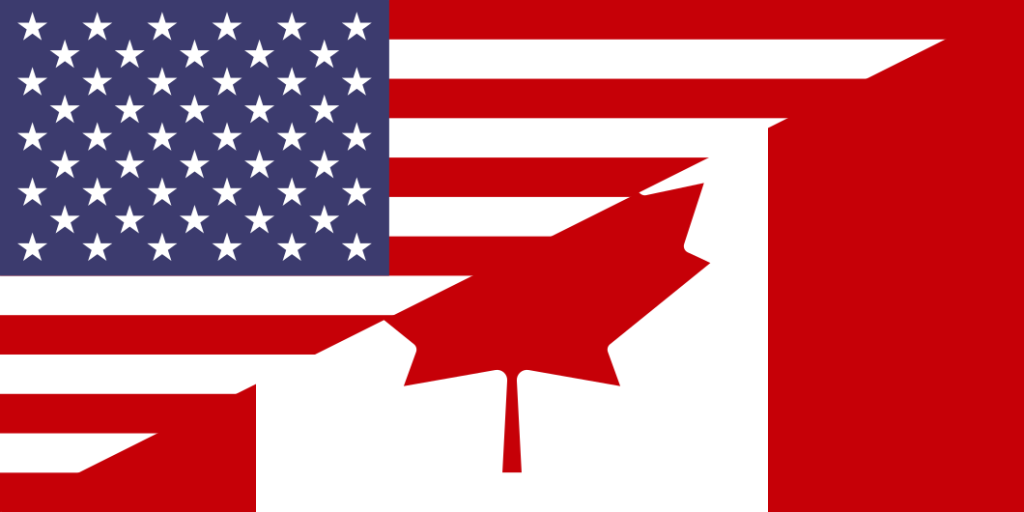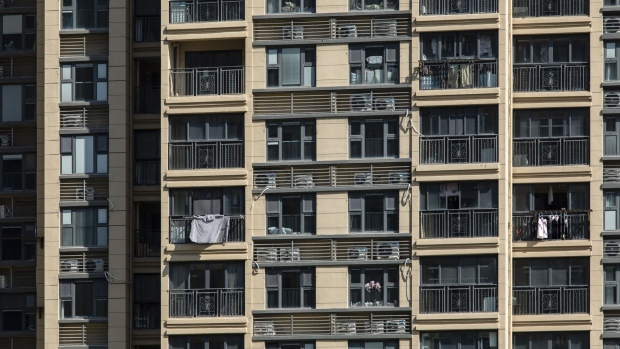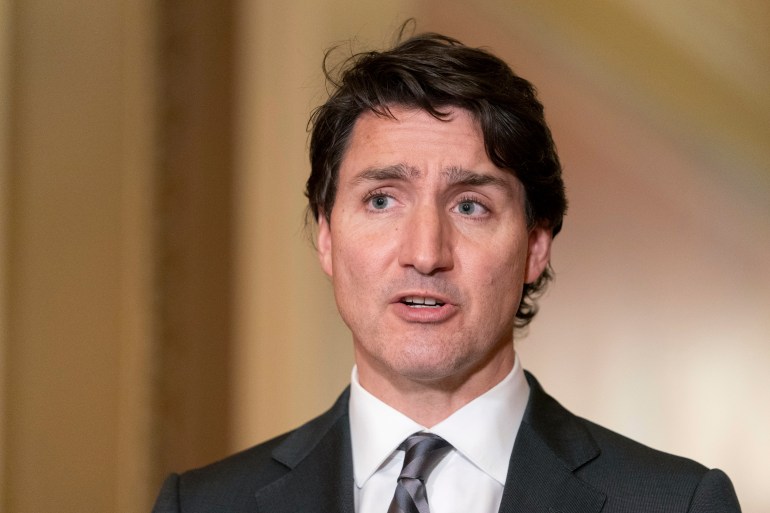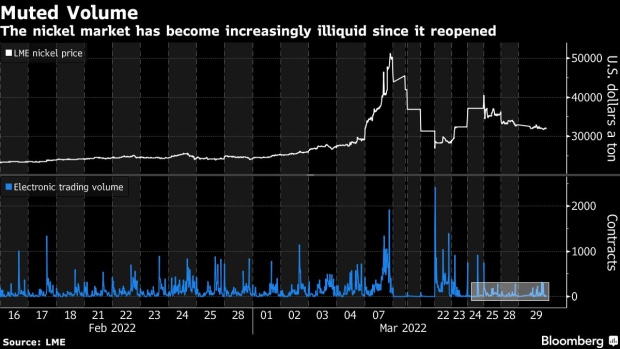Freedom Convoy Unmasked: The Attempted Overthrow of Canada

Opinion by Darren Clarke, February 17, 2022 (photo courtesy WikiCommons)
“When the US radical right is going after Canada nobody is safe. When I say democracy is fragile I mean it. We shall survive this onslaught but only if we don’t remain silent bystanders. Stand up for our friend Canada and let your voice be heard.”
Bruce Heyman, former US Ambassador to Canada (February 16, 2022)
As of yesterday you had to be asking yourself- If Canadian Premiers have all largely announced the removal of mandates and Covid protections why is Ottawa still occupied? The answer is because protesting mandates was only a cover used to manufacture consent for something more insidious. The overthrow of the government and the will of the majority. To understand how it has come to pass that Canadian self-determination is being threatened we have to talk about some things.
We need to talk about the evidence that there are forces, foreign and domestic, that are looking to destabilize and undermine Canadian sovereignty. We need to talk about how yesterday provided more evidence of how determined and well financed those forces are. We need to talk about the fact the Ottawa occupation was organized to provoke violence in our streets as a means to bring about a change in government. We need to talk about Tyler Russell.
We need to talk about Tyler Russell for three reasons, first, because he’s a member of the protest and a wholly representative one at that, second, on his Canada First Youtube channel he tells us precisely why he wants violence to happen in Ottawa, third, because of a video of a phone call he posted on February 11th which he claims is a call from Ontario Premier Doug Ford.
We also need to note that when Conservative leader Candice Bergen advocated her party support these protests in order to hurt the Prime Minister politically, she was supporting the designs of a mindset Canadian Conservatives have long cultivated via their various social media sources. The mindset of people like Tyler Russell.
Who is Tyler Russell? antihate.ca devoted an article to Russell and his Canada First outfit in 2021, noting a speech he gave on Parliament Hill, Canada Day 2020, “In his speech that day, Russell laid out his vision for a right-wing nationalist Canada First movement, citing Canadian white nationalist Faith Goldy and Nick Fuentes, the young leader of the “Groypers.” a movement and a further re-branding of the neo-Nazi alt-right, as sources of inspiration.” antihate.ca infiltrated Russell’s chatrooms to provide examples of violent rhetoric, racism, misogyny and general evidence of all the things that make up your every day, run of the mill, psychopath (and if you feel that’s excessive check out the antihate.ca article or any of Russell’s Youtube videos).
Russell’s Instagram page features a few pictures that strike at the heart of the moment Canada finds itself in. The first is a picture of Russell in Ottawa, at the protests, in front of a sign featuring an abundance of trolling, slogans like, “Trudeau is a Terrorist.” The second picture is more telling of the deeper threat to Canadian sovereignty.
This second picture is of the youthful Russell in a suit, a red tie and a red hat that reads, “Canada First.” Russell and a male counterpart stand side by side, arms around each other smiling for the camera. Russell’s partner in embrace sports a blue, “America First,” hat. Russell’s smile, like his counterparts, is the smile of a man who thinks he is being entirely original while dressed in someone else’s uniform. This picture of a Canadian unguardedly embracing an American persona seems entirely appropriate for the latest news in the ongoing uprisings across Canada against the Federal government. The undue influence foreign media is having on the larger narrative of the Ottawa occupation.
Canada First is of course a derivative of America First. America First is a Donald Trump campaign slogan maintained to propagate support for a ruling class Sarah Kendzior called, “A transnational crime syndicate masquerading as a government.” A government that looked to chop up the nation and sell it off for parts. In case you don’t know, Canada has lots of great parts to sell off, particularly in terms of its’ natural resources and public health care sector.
In this context, the picture of Canada First and America First, arm and arm, makes the copy-cat posing a caricature of a caricature. The vision of that embrace, of Russell’s hubris, channels the crescendoing of the long held American desire to realize their Manifest Destiny, the American capitalist class’s belief that they were ordained by God to devour, well, everything.
Of course the insatiable desires of unchecked capitalism devoured America first. So much so that as the Trump crime syndicate illustrated, America is more a concept than a place at this point. It’s the most effective swindle on the planet for those in pursuit of furthering wealth inequity. The torch for America’s current version of Manifest Destiny is carried by global carpetbaggers, or, as Kendzior put it, “an alliance of autocrats,” looking to further their disproportionate wealth at the expense of the quality of life of everybody else. That’s why the main outlets for portraying the Freedom Convoy at this point are Russian State media and Fox News. Oligarchs and Plutocrats. The modern day, self-ordained, royalty of Russia and the United States.
The larger goal for the American and Russian coverage is simple- To undermine Canadian sovereignty. When Tyler Russell spoke in a January 27th Youtube video about the possibility of violence at the occupation it was with glee. He wants that. He wants our government to have to physically engage with a protest that is wall to wall Canadian flags. It’s all optics baby. In his mind, in the occupation’s mind, it is the means to bring down the government.
I began writing about the convoy on February 2nd with a piece entitled- Freedom Convoy Unmasked: Who and What the Convoy Represents. Updating the blog as events continued to unfold, the concerns I expressed initially have all come to fruition. Namely, that a protest organized largely by white nationalists, fuelled by various Conservative propaganda sources, radicalized by global, radical, right wing groups, funded and provided public relations support by foreign actors, emboldened by police forces bending to their internal authoritarian leanings, was in fact a tool designed to undermine Canadian sovereignty and the will of the majority of Canadians.
Each point of what is essentially a flow chart for undermining the self-determination of Canada is supported by a preponderance of evidence–
- That the protest was organized by the likes of Pat King, Tamara Lich and James Bauder who either embody or are linked to separatists, racists and white nationalists is demonstrable.
- That Canada has been deeply infiltrated by right wing extremism (and at this point is significant point of origin for extremism) is well documented.
- That the Conservative party of Canada, via the likes of Ontario Proud/Canada Proud founder Jeff Ballingall, has cultivated an angry mob of meme-fuelled hate over Justin Trudeau’s time in power.
- That the current leadership of the Conservative party has actively looked to prolong the occupation, embolden occupiers and get as many photo ops with protestors as possible is well documented- up to and including, pictures.
- That the RCMP and Ottawa Police have provided numerous examples of both passively and actively supporting the protest.
- That the United States has invested heavily in funding the attempt to topple a democratically elected Canadian government. An example of that investment being that Americans provided 41.7% of 10.7 million dollars raised by an online funding site for the convoy.
- That Fox News and Russian State TV are by far the leading providers of online content portraying the occupation.
How Tyler Russell caught my attention yesterday was via a February 11, 2022, (the day #snowmobilegate was trending on Twitter) video he shared on Twitter that Russell claims is from Doug Ford. Is it Doug Ford? I don’t know. The order of events the speaker on the phone promises has played out since and yeah, the voice sounds like him, “We’re pulling these passports, we’re going to get back to normal, and ah.. you know…I can’t give you an exact date but it will be very soon… okay… I’m going to be speaking over the next few days, Friday I’m going to be putting out a statement, Monday I will be giving dates…”
You can make what you want of the video but it’s compelling to consider given the news yesterday of Ford’s ex-Chief of Staff Dean French being the intermediary in talks between the City of Ottawa and the convoy organizers. The casual relationship between a Ford associate and protest organizers that are looking to overthrow a democratic government is disturbing. Particularly disturbing given that yesterday one of the convoy organizers, Pat King, who you may remember from his statement at an earlier juncture of the convoy, “The only way this is going to be solved is with bullets,” once again took to social media to post a video exposing his dangerous perspective, this time threatening the police, “In the end, just following orders is not going to be a good legal defence… just following orders is not going to be your saving grace when you’re standing on the other side of that witness box.”
This latest evidence of Conservative Premiers sympathetic, often cozy, relationship with protestors, highlights how intertwined the Conservative Party and the Convoy they created are. That some of that evidence of this relationship would come from someone who openly hates Justin Trudeau brings us to the Prime Minister. It brings us to why this kind of coordinated effort to undermine the will of the majority of Canadians would take place.
Justin Trudeau has proven himself as Prime Minister to be a social progressive and an economic centrist. The last part isn’t far enough right for Canadian and foreign financial elites who find the Conservative Party a more amenable partner for transnational looting, the first part, being a social progressive, is the tool used to inflame those with nationalistic/racist tendencies to protest against him. Few are under the illusion the Prime Minister is a perfect leader or person however the circumstances have conspired to create a context within which he is the the final line of defence for so much of which so many Canadians hold dear about our greater community. And he has handled a challenging situation, a flood of domestic and foreign opposition, really well.
I don’t know how we got to a place where Justin Trudeau is firmly placed as the last, best, chance for all that many hold dear about Canada, but here we are.
While Conservative parties have gamed a system that largely features two centrist/left wing parties versus one hard right wing party, Canadian sovereignty has been undermined in favour of transnational interests. All that remains left for them to conquer is the Federal government. Going into this third term as Prime Minister despite an uneven playing field swamped by American Hedge Fund media and rabid Conservative social media sources, patience has obviously worn thin to break down this final, most important, hurdle in gutting Canada.
Which brings us to this moment in Canadian history featuring a Conservative party that has brought Canada to a State of Emergency by design. Featuring a convoy that has brought Ottawa to the cusp of heightened violence by design.
This is a transnational coup designed to install Conservatives into the Federal government in order allow for the looting and selling off of Canada in pieces. This is an attack on Canadian sovereignty, especially every thread of the fabric of Canada that elevates the average person’s standard of living and provides vulnerable human beings, those within our borders, and those that seek to immigrate here, with basic protections and human rights.
That’s what is at stake right now. The heart of Canada. It appears the Prime Minister has recognized this, the only question is whether enough Canadians will realize that the person with their arm around us, smiling, doesn’t want to be our friend but rather our master.
:quality(70)/cloudfront-us-east-1.images.arcpublishing.com/mco/7VY6PFEP7JENBBLXUJNIR2VBZM.jpg)
:quality(70)/cloudfront-us-east-1.images.arcpublishing.com/mco/YA75BGQLUVCS5IE63STOAJC6CI.jpeg)
:quality(70)/cloudfront-us-east-1.images.arcpublishing.com/mco/KYTQLMH3LJFQPDJNE2QTSCD2HI.jpg)
:quality(70)/cloudfront-us-east-1.images.arcpublishing.com/mco/6JNTLOW5HZFE3O2SN7D3WQ3JO4.jpg)


.jpg)































